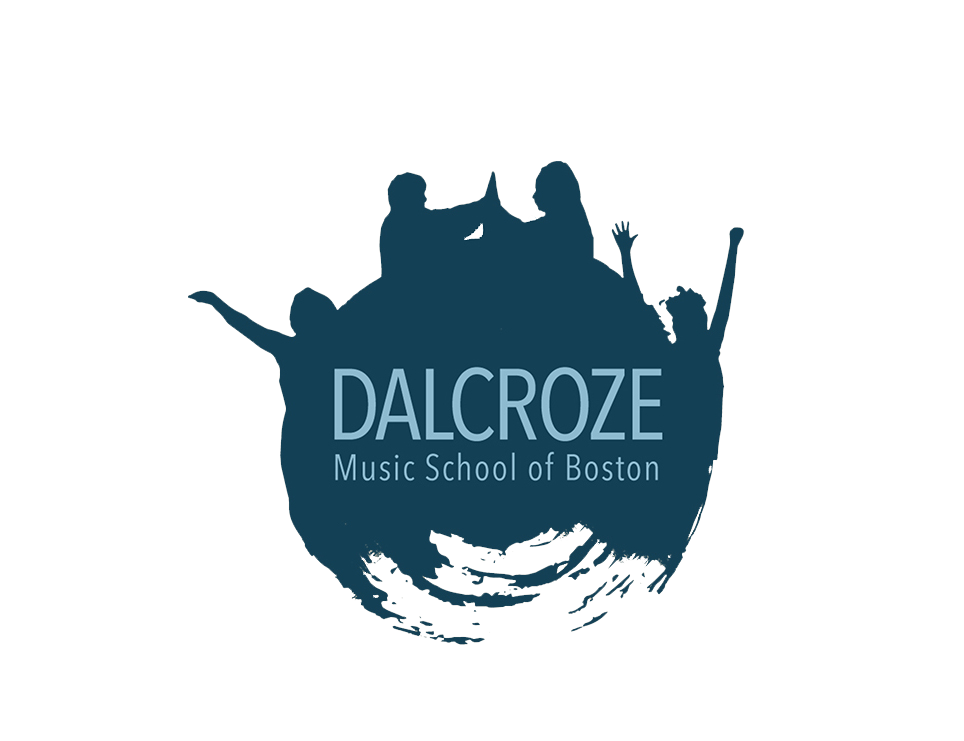Courses for Children Ages 5-8
For children ages 5-8, our school offers group Dalcroze Eurhythmics classes that:
‣Cultivate musicality and knowledge through joyful, discovery-based experiences
‣Invigorate students’ imaginations
‣Increase students' capacity for independent and cooperative learning
‣Prepare the body as an instrument by increasing coordination, control, balance, attention, flexibility, focus, spatial awareness, emotional knowledge, and vocal precision
We proudly teach the Dalcroze-Eurhythmics curriculum designed by the Dalcroze School of the Rockies.
The following course descriptions are adapted from the Dalcroze School of the Rockies.
Dalcroze-Eurhythmics courses are high-energy, exciting, and fun! Geared for 5-8 year old students, Dalcroze-Eurhythmics classes:
prepare the body as an instrument by increasing coordination, control, balance, attention, flexibility, focus, spatial awareness, emotional knowledge, and vocal precision
increase students' capacity for independent and cooperative learning
support a joyous and discovery-based environment for music education
provide a deep and solid base for students to successfully enter the DSB's Dalcroze Rhythmic-Solfège sequence and begin instrumental study
What do children gain through Dalcroze-Eurhythmics?
In classes fostering discovery, active listening and the spirit of play, the Dalcroze-Eurhythmics program addresses a broad range of corporal (bodily) and musical subject material over the course of two years. Occasional fun sheets to complete with parents along with song literature reinforce the ideas learned each week.
Throughout their two years in the Dalcroze-Eurhythmics program, students:
Develop pitch matching and identification: developing the ear for accurate intonation and healthy singing.
Students learn to sing and identify scale degrees 1-5 in the major scale and play them on a xylophone.
Students learn folk songs and echo canons.
Students show pitches through physical embodiment in physical space.
Students learn to navigate major and minor tonal landscapes.
Develop rhythmic, metric, and expression knowledge: moving, listening, singing, analyzing, writing, improvising, and deep understanding of the following musical concepts in both standard notation and invented symbols.
Note values: Quarter Notes, Eighths, Half Notes, Dotted Half Notes
Simple meters of 2, 3, and 4
Phrases, musical gesture, slurs, form
Musical texture (polyphony versus melody)
Musical symbols and their meanings
Invigorate their imagination: gestures, images, story-telling, and programmatic music (music that tells a story) helps to stimulate and develop children’s imagination.
Learn appropriate knowledge and use of body parts and joints (head, trunk, hips, limbs etc.):
Students learn how different parts of our bodies move, their range of motion, and their dynamic qualities
Students gain basic independence of the limbs (for example, the ability to move one limb while the others are stationary)
Students increase basic large and small motor skills
Cultivate spatial awareness: both physical space and musical space.
Students explore spatial and movement qualities: above and below, over and under, side to side, up and down, closed and open, curvy and straight, forward and backward, right and left, near and far, center and periphery, around and through, away and toward, beginning and end, front and back, jagged and smooth, heavy and light, thick and thin, opposites, contrary motion, crossing the midline, and more!.
Students explore basic shapes with the body: lines, circles, squares, triangles, rectangles, ovals, and more!
Improve various types of locomotor skills: movement across the floor on one's feet, back, stomach, side, knees, hands and feet (bear walk, crab walk)
Students express the musical elements they hear through many ways of controlled and coordinated movement including rolling, crawling, sliding, creeping, growing, collapsing, sneaking, walking, marching, trotting, jogging, gliding, running, tip-toe walking/running, stomping, lunging, leaping, jumping, hopping, galloping, chassé, skipping, swinging, swaying, spinning, turning, shaking, wiggling, and more!
Students learn appropriate musical and emotional connotations from moving in these different ways.
Explore musical use of materials: hoops, bean bags, ropes, scarves, ribbons, batons, balloons, balls of various sizes (kicking, tossing, bouncing, rolling), and more!
Increase musical use of different instruments: claves, drums, maracas, xylophones, and more!
Develop cooperative learning and beginning ensemble skills:
Students work with partners or small groups in moving, dancing, clapping, sharing, improvising and singing
Students explore ways to mirror gestures of a teacher or other students in the class.
These actions require the students to learn flexibility, adaptability, and compliance in addition to coordination, intention, balance, and control.



